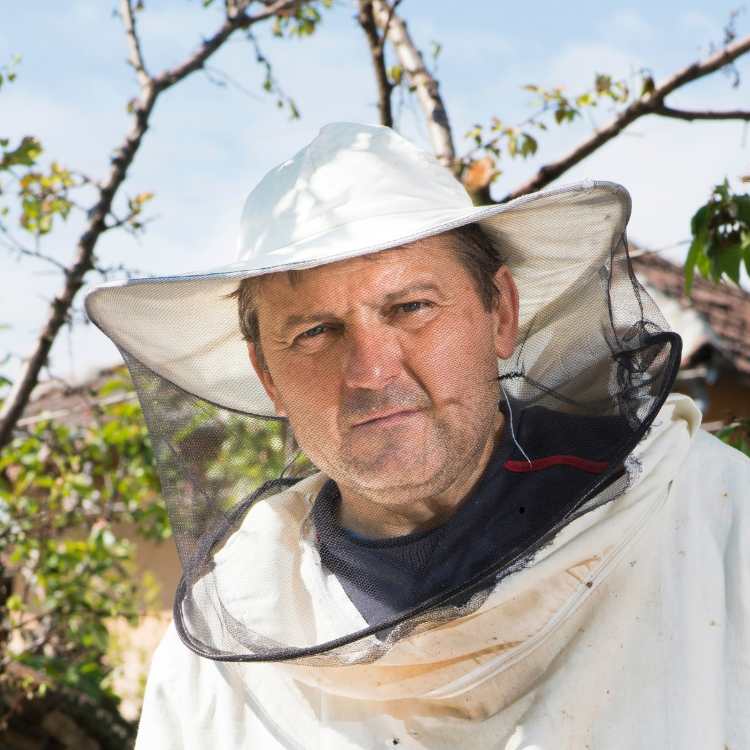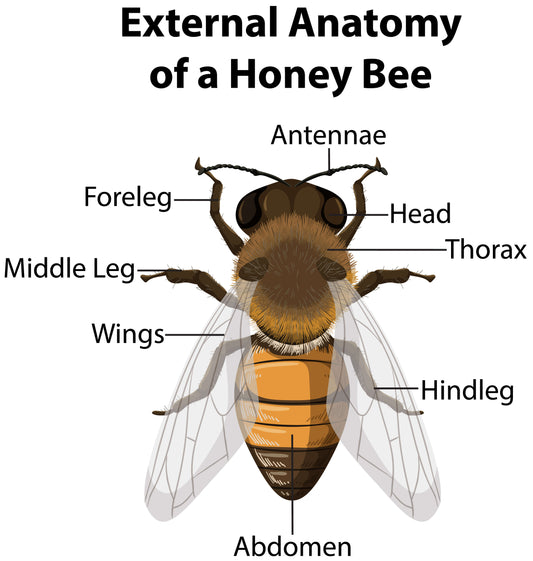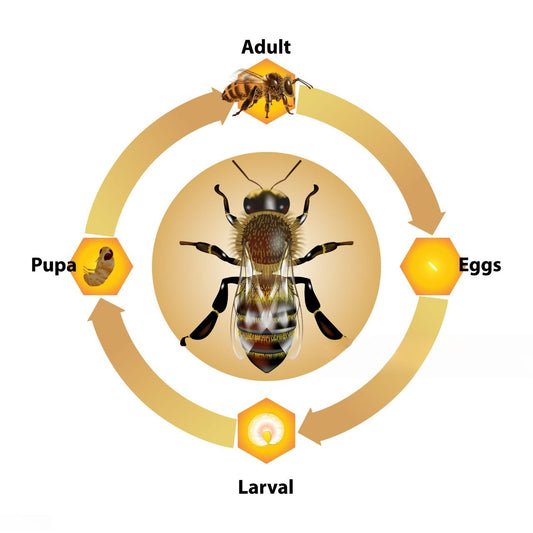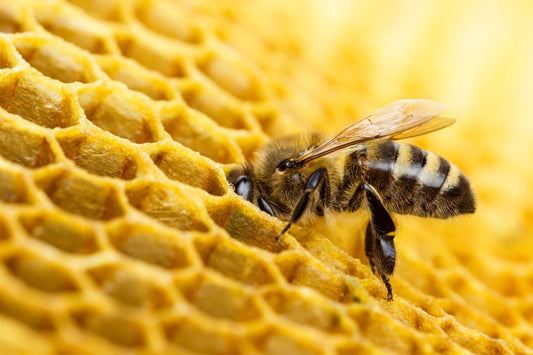Much more than essential pollinators, bees are biological engineering marvels, perfectly adapted for survival, foraging, and hive building.
As a beekeeper, I often remind people that if you understand bee anatomy, you can understand how bees interact with their environment and how they are able to sustain the hive.
Here is a quick look at their intricate yet wonderful structure. Segment by segment.
The three part structure of the honeybee
Every honeybee has three main body sections: head, thorax, and abdomen. Each of these plays a vital role, and together, they form a finely tuned system that allows bees to forage, communicate, and defend the colony.
The head of a honeybee
Think of this as the control center or the command hub in bee anatomy. The head houses the organs needed to see, smell, taste, and manipulate food and materials.
Compound and simple eyes
A honeybee has five eyes. Two large compound eyes help it pick up shapes, detect motion, and navigate flight paths. The three smaller ocelli, or simple eyes, sit on top of the head and are used to measure light intensity.
Unlike us humans, bees are able to detect ultraviolet patterns on flowers. These patterns guide them to nectar-rich zones that remain invisible to human eye.
Antennae
The antennae act as highly sensory tools. They pick up pheromones, vibrations, and scents that allow the bees to communicate within the hive and identify nectar sources outside.
These twin appendages are so sensitive that they are able to detect trace amounts of chemicals in the air. Without these, the bees are essentially blind to the social and foraging cues.
Mouthparts
The mouthparts are highly specialized. The mandibles act like pliers, used for cutting wax, shaping the comb, and handling food.
The proboscis is a long tube like organ that extends for sipping nectar and water. This dual system is a hallmark of the bee anatomy that combines strength for work and precision for feeding.

The thorax
The thorax of the bee is packed with muscles that drive both wings and legs, enabling foraging trips and in-hive duties.
Wings
Bees have two pairs of wings attached to their thorax. Their flight depends not only on the wings flapping but also on a figure-eight movement that generates the lift needed to carry nectar, pollen, and even water.
Without this unique pattern, bees would be too heavy to sustain flight.Legs
The six legs of a bee are meant to do more than just help them walk. Each pair carries special adaptations. The front legs are equipped with brushes to clean the antennae. The middle legs help to transfer pollen. The hind legs are fitted with corbiculae, or pollen baskets, that hold compacted pollen pellets during foraging trips.
Worker bees use a series of comb-like hairs to sweep pollen down their body into these baskets.
Illustration of bee body
The abdomen
The bee’s abdomen contains critical organs and systems that sustain life and enable hive productivity.
Wax glands
Worker bees have glands located on the underside of their abdomen that produce wax scales. The bees collect these small flakes of wax, chew them, and shape them into hexagonal cells.
When wax is first produced, it is white, but the wax becomes darker as bees walk over it and it becomes soiled with pollen, propolis, and debris.
The honey stomach
Bees have two stomachs. One is for digestion, while the other (the honey stomach) holds nectar. In this organ, various enzymes can break down more complex sugars and transform the nectar in preparation for being transformed into honey. The antibacterial compounds introduced during this process give honey its long shelf life and medicinal value.
Stinger and venom apparatus
The stinger is the bee’s defense. Worker bees carry barbed stingers connected to venom sacs. Once used, the stinger tears away from the abdomen, costing the bee its life.
Queens, however, possess smooth stingers that can be used multiple times.
Breathing without lungs
Bees do not have lungs. Instead, bees have spiracles. Spiracles are tiny holes located along the abdomen. Air enters the body through the spiracles into a set of tracheal tubes, which deliver oxygen directly to tissues. The unique form of respiration not only reduces weight but also aids in efficiency.

A bee sting
Why do you need to understand the bee anatomy?
For beekeepers and scientists, understanding the bee anatomy is not purely just out of curiosity. Rather, it is insight grounded in practice that supports the health of the hive and the success of pollination.
- It improves hive management by showing how each part of the body functions during foraging, defense, and comb building.
- It helps in disease prevention because anatomical changes often reveal early warning signs, such as deformed wings pointing to viral infections.
- It indicates nutritional stress, as bees' wax glands are underdeveloped, indicating they are not receiving adequate nutritional resources.
- It shows pollination efficiency. This is because the position of the hairs, legs, and sensory organs all affect how bees transfer pollen.
The beauty of the bee anatomy
As beekeepers, we can’t help but wonder how such small creatures can have such large responsibilities. Their bodies are critical to the existence of ecosystems all over the globe.
So the next time you see a bee working, remember that every movement is activated by an amazing anatomy and incredible adaptations shaped and molded over the course of millions of years.
For more such fun titbits from the world of bees, consider following my full blog here.





